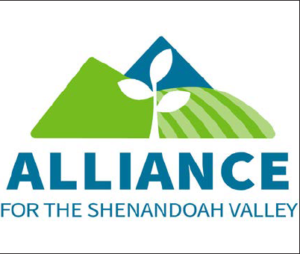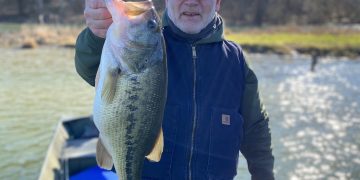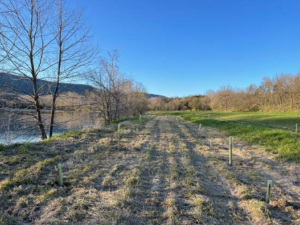
Do you or someone you know grow crops, raise livestock, or own land? Have you been considering changing your production methods, updating your management, or making improvements to your property? If so, the time to act is now!
This year, your local Soil and Water Conservation District and Natural Resources Conservation Service have record levels of funding to provide technical and financial assistance to Virginia farmers. Recent changes in the programs and applications also mean that today’s assistance is far more flexible and better able to meet the needs of landowners and farmers than ever before. If you were turned away, or turned off, from working with your local conservation service providers in the past, things have changed, and you should try again.
Funding and guidance are available for planting trees, installing permanent and temporary fencing, planting cover crops, adopting rotational grazing, improving pastures, managing animal waste, drilling wells, designing and installing livestock watering systems, building stream crossings, reinforcing high-use areas, and much, much more.
We have all heard about the need to adopt agricultural practices that improve the water quality locally in our streams and rivers and further downstream in the Chesapeake Bay. Valley farmers have been tasked with providing that critical benefit for years. And it is true that much of the assistance available to farmers is aimed at reducing runoff and soil erosion from farms.
However, it has been less often discussed that many of the same practices that improve water quality can also improve the quality of soils and pastures and provide other benefits that directly impact a farm’s productivity.
As one example, picture a farm that is grazed in the ‘conventional’ manner. On this farm the cattle are allowed unlimited access to all areas of the pasture and any creeks or streams that flow through the property. The pastures on this farm remain very short most of the year, and when not actively feeding, the cattle can be found in just a few of their favorite spots, most likely under some shade trees and near the creek. When the grass has no break from hungry cows to recuperate, it becomes weaker, susceptible to drought, and easily flooded by heavy rains. When cows spend most of their time in their favorite areas, they compact the soil and the nutrients from their manure are either sucked up by tree roots or washed away downstream.
Now picture that same pasture with some new fencing that divides it into several smaller pastures and prevents or limits the cattle’s access to the streams (which in some cases can be funded up to 100% by the local Conservation District). Now the cattle will not be able to spend all their time in the same areas and their manure will be better distributed across the farm, providing important nutrients for growing grasses. While the cattle are feeding in one pasture, vegetation in the other pastures can fully develop leaves above ground and roots below. More plant material means that when it rains more water will be stored in the soil, rather than pooling above ground or running off into the creek, and the pastures will better withstand extreme weather. These benefits lead to healthier pastures and therefore healthier cows while also ensuring that cleaner water flows off the farm.
The Soil and Water Conservation District and Natural Resources Conservation Service provide funding and technical support for these practices and others that pertain to dairy, poultry, hay, small ruminant, and fruit and vegetable producers. They also coordinate with other providers of technical support like the Virginia Department of Forestry, the Farm Service Agency, and local nonprofit organizations that offer complimentary assistance for farmers. So, if your local conservation office programs still don’t work for you and your land despite this year’s record funding and flexibility, they can work with partners to find solutions to your unique needs.
By Kevin Tate, Alliance for the Shenandoah Valley. Kevin manages the Shenandoah Valley Conservation Collaborative, a partnership of nonprofit organizations and state and federal agencies working together with farmers and landowners to conserve productive land and clean water. Ktate@shenadoahalliance.org
Photo caption: This farm in Page County has worked with SWCD and NRCS to install many improvements including the tree planting you see here. Photo by Chris Anderson.
If you live in Rockingham County your local conservation office is at 1934 Deyerle Ave in Harrisonburg and can be reached at 540.534.3105
If you live in Shenandoah County, your local conservation office is at 722A E Queen St in Strasburg and can be reached at 540.465.2424

































